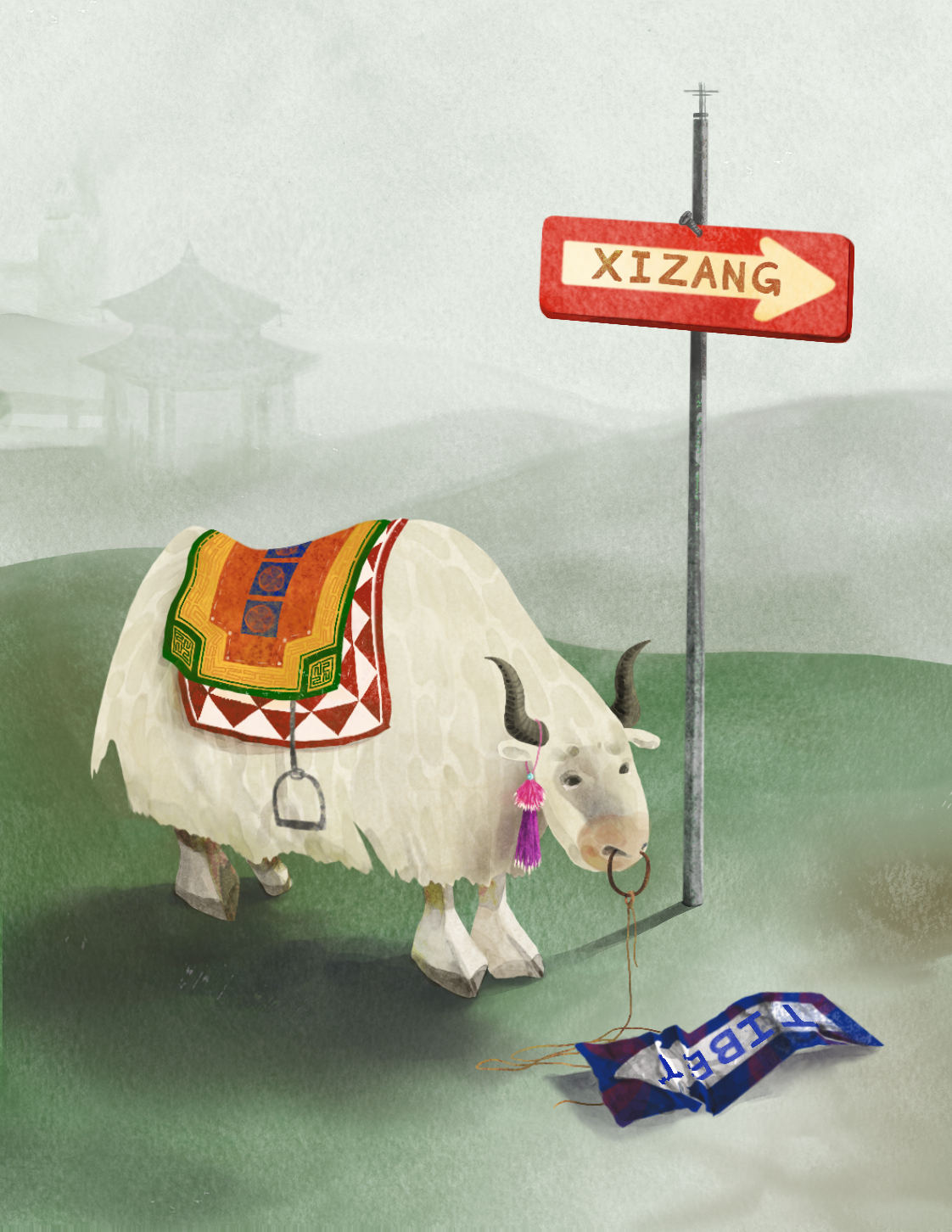Names are more than just labels—they are steeped in histories and tangled in identities. When a name changes, where does its history go? Does it disappear in the shadow of its past, buried in the grave of its former identity? Or does it stay, trailing behind the present as an enduring memory? Sometimes, we rename to bury: American schools, monuments, and military bases named after Confederate leaders have been renamed to start a new chapter in history. Other times, as in the case of Tibet, erasing a name is synonymous with erasing an entire culture.
For millennia, Tibet, an autonomous region of southwestern China, has maintained relative sovereignty and cultural independence atop its plateau. However, in 1950, China invaded Tibet; the newly empowered Chinese Communist Party sought to take advantage of Tibet’s natural resources and strategic border with India. China still occupies Tibet today, claiming that its ownership dates back approximately 800 years. While Tibet has attempted to preserve its own national flag, Tibetan language, Tibetan Buddhist religion, and political system under the Central Tibetan Administration (CTA) and Dalai Lama, activists and UN experts have accused the Chinese government of erasing Tibetan culture.
China enforces compulsory Chinese language learning for Tibetan children, and since 2021, the Chinese government has started to replace the name “Tibet” with its Mandarin counterpart, “Xizang (西藏),” which roughly translates to “western treasure house” in official documents. Within China’s borders, the Tibetan Autonomous Region effectively no longer exists—instead, there is a Xizang Autonomous Region in its place. While Tibet is the English translation of the local name for the region and originates from the indigenous language, “Xizang” first appeared much later, in the Qing dynasty, potentially as a mistransliteration. Tibetans strongly oppose this change because it falsely conflates Tibet with China when the two are historically separate. By renaming Tibet, China is weaponizing the power of a name to subvert the region’s unique historical narrative and assert control over its identity on the global stage.
While Tibet may be widely recognized on the global stage, “Xizang” remains largely unknown—to China’s advantage. The name “Tibet” is often mentioned in calls against human rights abuses and depictions of struggles for autonomy, whereas “Xizang” offers a comparatively blank slate upon which China can craft a new narrative. Tibet is also often imagined as an entity separate from China, while Xizang sinicizes the name and makes perceptions of the region’s ownership ambiguous. To further promote the global adoption of this name change and normalize the term “Xizang,” China is weaponizing its aid programs in weaker countries to pressure their governments into accepting the new name, and Chinese media outlets have started exclusively using “Xizang” in their English-language news articles.
China’s attempted renaming of Tibet is not an isolated case. After People’s Liberation Army (PLA) troops took over the East Turkestan Republic in 1949, the Chinese government renamed the area the “Xinjiang Uyghur Autonomous Region.” The term “Xinjiang (新疆)” literally translates to “new frontier.” Today, the use of the term “East Turkestan” is largely obsolete around the world, despite strong Uyghur objections to the sinicized “Xinjiang” term. Since 1949, Beijing has continued removing linguistic references to non-Chinese identity: Between the years of 2009 and 2023, China changed the names of hundreds of villages in “Xinjiang” that referenced the religion, history, or culture of Uyghurs.
Journalists, academic institutions, foreign governments, and global organizations face a question: Will they silently accept this name change, or will they push back against Beijing’s erasure of minority identities? Some Western institutions have already acquiesced. In 2024, the British Museum used the phrase “Tibet or Xizang Autonomous Region” to describe Tibetan artifacts, prompting uproar from Tibetan activists. Similarly, a French museum had replaced “Tibet” with “Xizang” in its exhibits but reversed the change following a public backlash. Even if China can quickly replace a name, activists demonstrate that cultural memory cannot be easily erased. Language is not just trivial terminology—it is a way for populations to preserve their cultural identities in the face of existential threats.
The power of language lies in its repetition, the power of a name in its recognition. Names carry with them the weight of their histories in their syllables, shaping how we understand places and their populations over time. Tibet is a name that reverberates around the world, echoing calls for human rights and amplifying its distinct cultural and spiritual identity. If “Xizang” successfully replaces Tibet everywhere, future generations may forget Tibet’s struggles for autonomy and accept China’s imposed narrative as fact. As the mainstream media increasingly adopts the name Xizang, the rest of the world must become the protector of Tibet’s ongoing story.
